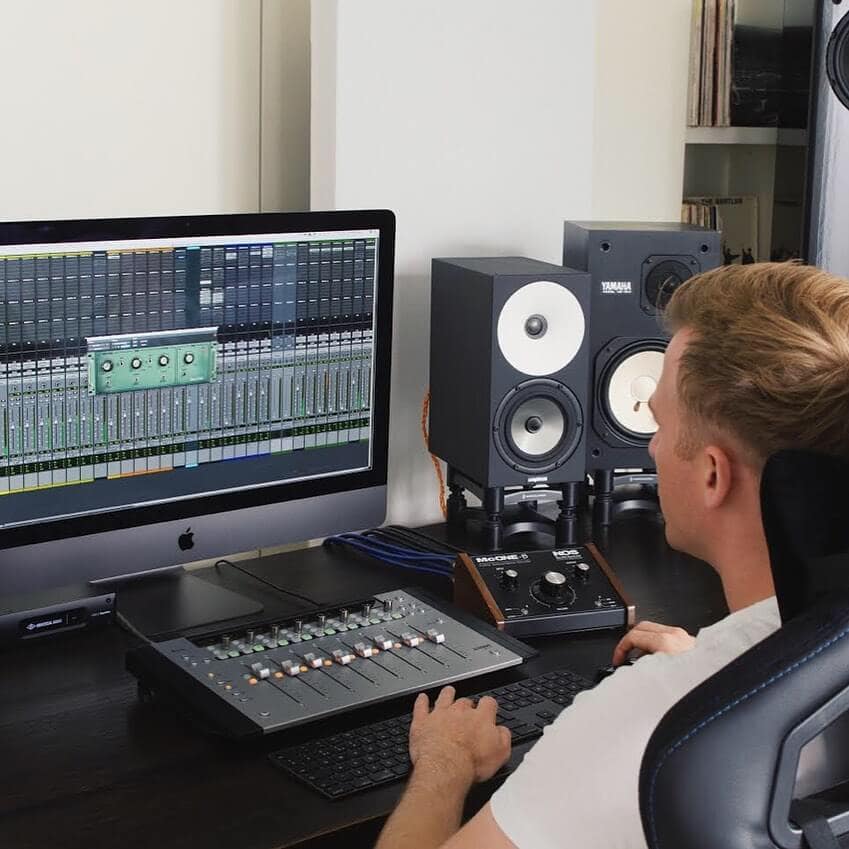Clearing the Mud
You can find many articles online extolling the virtues of compression and EQ in the recording and mixing process: using compression to control dynamics or glue your mixes together, employing surgical EQ to deal with undesirable frequencies, or finding the magic EQ bands for giving presence to vocals.
But there is a simple but often overlooked process – one that reinforces the separation between every element in a track, while also cleansing unwanted noise and enhancing tone.
This process is audio filtering.
What is audio filtering?
An audio filter is a frequency-dependent amplifier or passive circuit that removes unwanted frequencies from an audio signal. It is a simple but powerful tool to shape the sound of your tracks.
Audio filters can be classified in two ways:
1. By their construction:
This is a complex topic, but fundamentally filters can be separated into active and passive types.
- Passive filters are designed using passive electronic components such as resistors, capacitors, or inductors.
- Active filters are designed using active components such as transistors and operational amplifiers.
2. By their frequency response:
The most common delineation here is between high-pass (low cut) and low-pass (high cut) filters. These define the highest and lowest frequencies of interest in the signal and let audio above or below that frequency pass to the output. This is the cut-off frequency and is defined as the frequency at which the amplitude of the audio falls by 3 dB when the filter is applied. For example, in a high-pass filter at 80Hz, the amplitude of the signal will drop by 3dB at 80Hz and any audio below that frequency will be attenuated progressively.
This level of attenuation of the signal outside the cutoff frequency is called the slope and is measured in dB per octave. Filters are usually designed with a slope that has a fixed value, but in some devices, there are multiple slope options. Most filters on mixing desks have a slope of 12dB or 18dB per octave, which generate a more abrupt cut in the signal – though it is not unusual to see some other consoles with a 6dB per octave filter, shaping the sound in a smoother and more musical way.


From Analogue to Digital
What about the filters in your DAW? How do filters apply in the digital domain? DAWs and plugins utilise what is called digital audio filtering. A digital filter is just a filter that operates using digital signals. It is a computation which takes one sequence of ones and zeros (the input signal) and produces a new sequence of numbers (the filtered output signal). This allows you to take any audio filtering carried out by analogue equipment, model it, and turn it into a digital filter that does the same thing within your computer, and even with the same warmth and tone.
A particularly special example of this process is what Sonimus has done with Sweetone: combining characteristics from multiple analogue devices and turning them into a simple and yet powerful plugin-in, one of the main features of which is its filter section.
Also read: What Is The Sound Of Analog
Why are filters useful?
At this point, you can see the importance of filters, especially high-pass filters, to the recording and mixing process. High-pass filters are used extensively to remove rumble and clean audio. They can also be a straightforward solution to reduce plosives in vocal tracks, as well as to create space in the frequency spectrum for the different elements in your mix.
For example, by simply high-pass filtering every track except your bass and kick, you remove rumble and unwanted noises that muddy your mix. As a result, it is much easier to balance your song and get the headroom and space the track was missing. The low end will be clearer and punchier, and you will find yourself having to use far less EQ to get the tone you want. It also drastically improves the effect of compression by fine-tuning exactly which frequencies the compressor reacts to. Even a gentle high-pass filter around 50hz to your kick can give definition and punch to your drums.
Try this: Listen to what you are removing by doing the opposite filter at that same cut-off frequency in your audio signal.
Low-pass filters can be equally indispensable. For example, you can tame your reverb effect tracks by filtering them at 10kHz, leaving more space for other elements in your mix. In addition, they can be used to shape the sound of your bass or to remove reflections from the room.
Plugins like Sweetone make all this process very easy and very effective at the same time. On top of its smooth and musical high and low pass filters, you get the warmth of a preamp transformer and a simple volume knob with different shaping options to get the perfect tone for your tracks. It is a convenient, user-friendly tool that instantly brings sweet, analogue sound straight to your DAW.

How do you filter? Is Sweetone one of the tools you use to shape the tone of your tracks?
Let us know in the comments section some of your favourite techniques to get separation and definition in your mixes.
“Carlos Bricio, Music Producer & Sound Engineer | carlosbricio.com | Linkedin: linkedin.com/in/carlos-bricio-music-producer/
Instagram: @cbricius | Twitter: @CBricius”







Hi Carlos, fantastic and very insightful article!!!. I used to filter with common EQs till I bought Sweetone. It is one of my prefer tool as recording as mixing. I clean unwanted noise and as you say I enhance tone. By the way, having only 2 slopes (6 & 12 dB per octave) is good with low frequencies (HPF) since we avoid phase issues and we provide more musicality. Good Black Friday!!!!